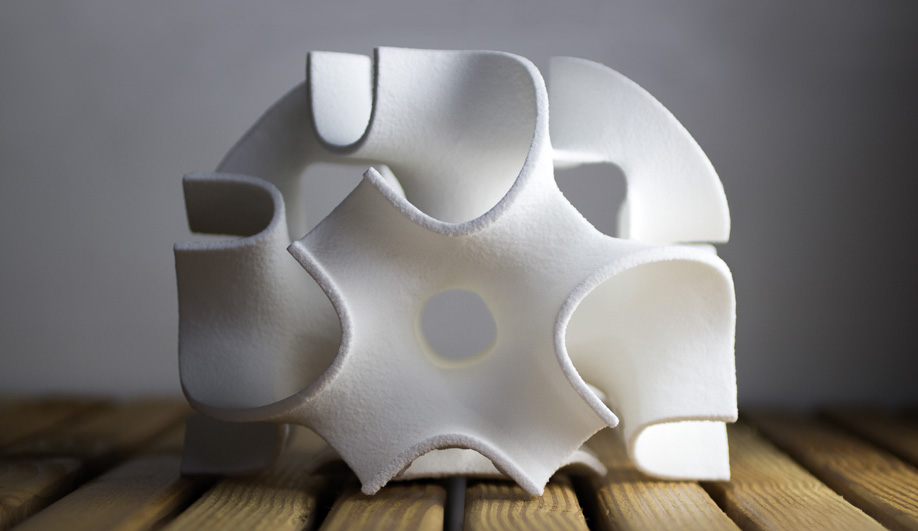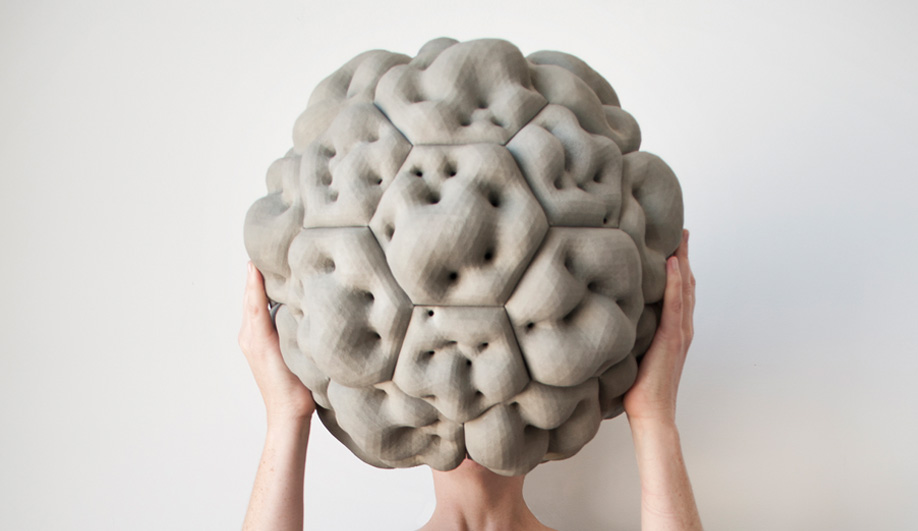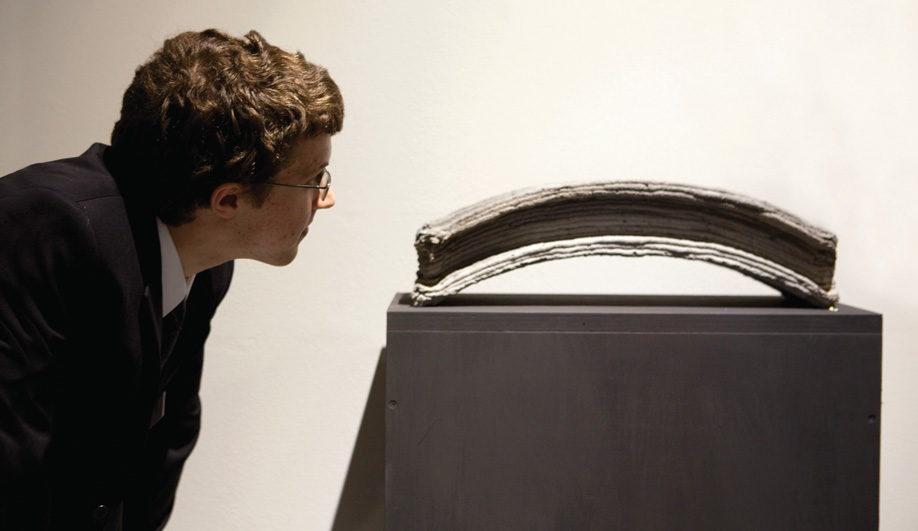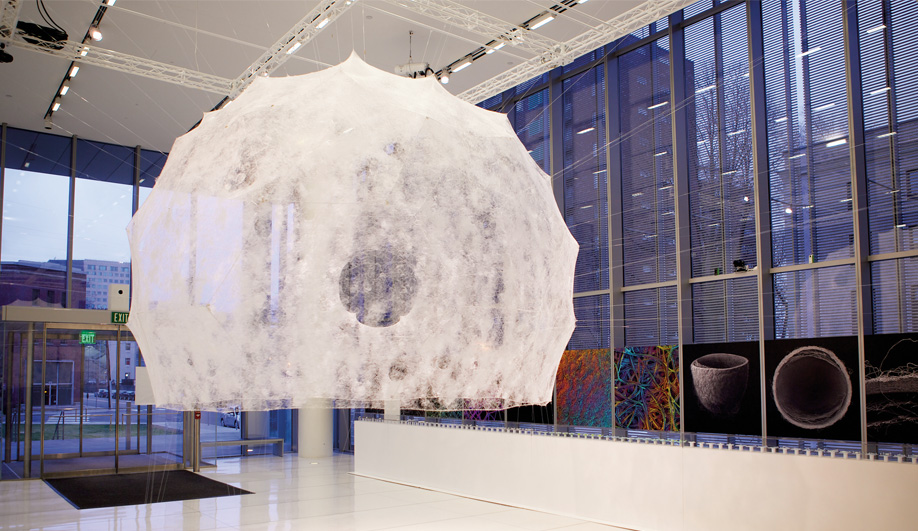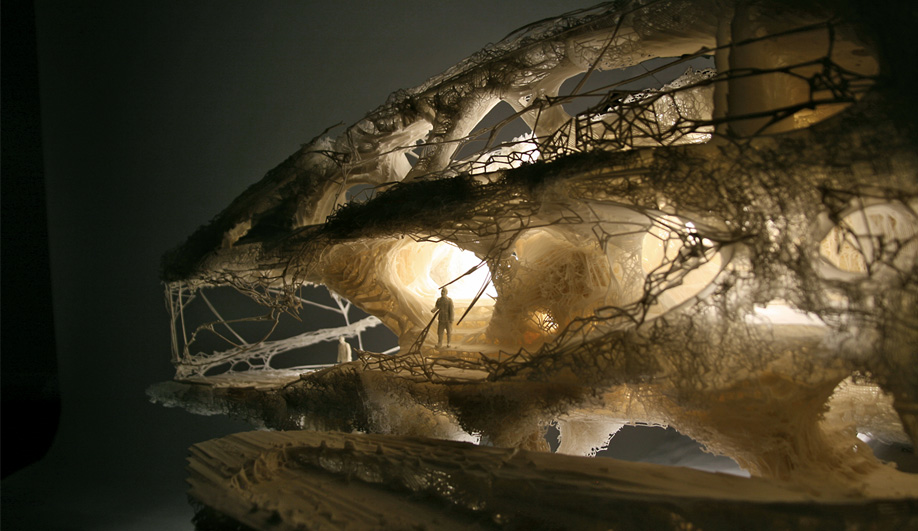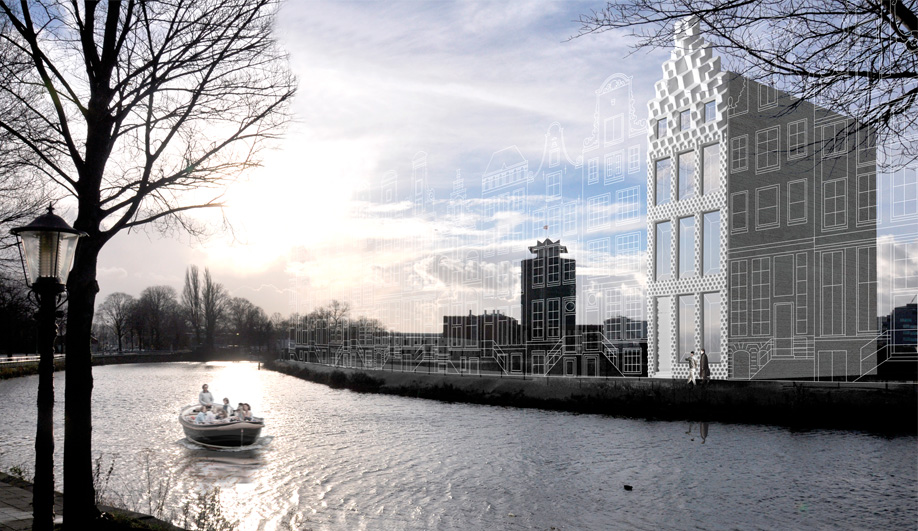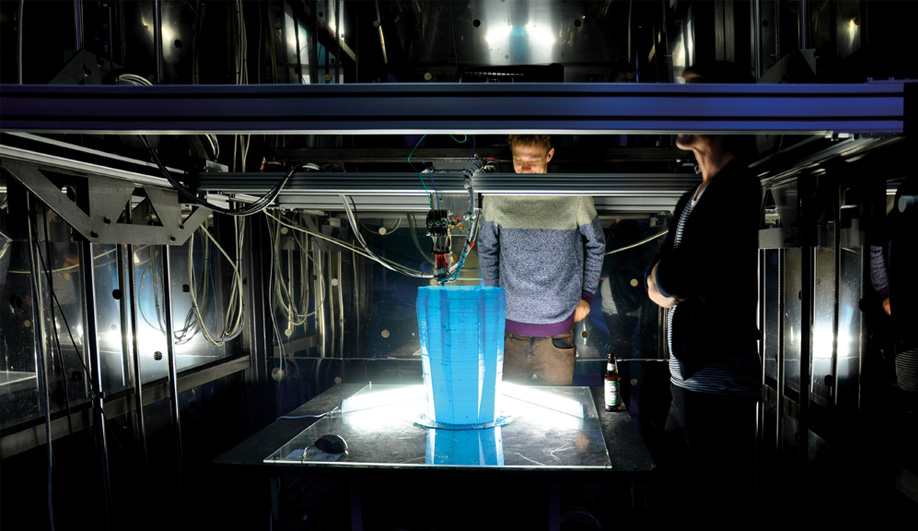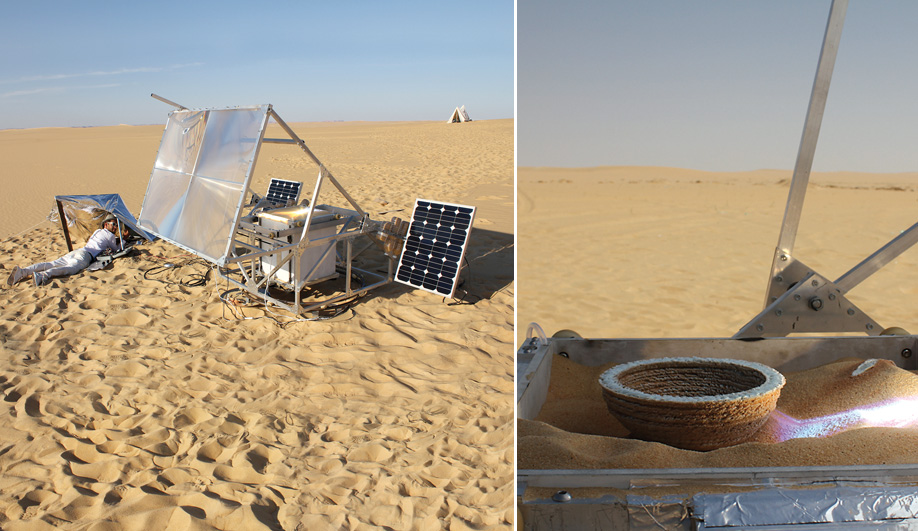Over the past year, 3-D printing has exploded into the mainstream with a sensational list of firsts: the first houses to be built using the technology are now under way; the first model for a lunar module assembled by robots has been unveiled (courtesy of Foster + Partners); and, infamously, the first operational firearm was squeezed into existence, printed at a cost of just $25.
Of course, 3-D printing (formerly known as rapid prototyping) has been around for decades, and leading manufacturers routinely use it to supplement traditional mechanical operations. But its growing presence is being touted as the next industrial revolution, poised to change entirely how things are made, how designers manufacture their products, and how architects build buildings.
“The current limitations are bound only by the size of the printer and the materials used,” says Ron Labaco, the curator behind Out of Hand: Materializing the Postdigital, an exhibit opening next month at New York’s Museum of Art and Design, where products and prototypes by such future-thinking designers and architects as Zaha Hadid, Daniel Libeskind and Greg Lynn will be on display.
Labaco has spent close to two years tracking how digital fabrication has worked its way into the design realm, and like many industry watchers he believes we have only begun to exploit its potential. “The creativity that abounds around the technology,” he notes, “will open up to great new concepts.”
Perhaps the current race to construct the first so-called 3-D-printed house illustrates this best. At least four such houses are in the works, each by architecture firms using their own purpose-built methods, including one by Softkill Design of London. Fabricated out of plastic, the structure’s ultimate form will look like a web of fibrous strands, a design based on the algorithms of bone tissue.
Earlier this year, DUS Architects began printing its canal-side house in Amsterdam, using bio-plastic blocks produced from corn. The firm developed its own giant printer, named the KamerMaker, and its production facility, enclosed within a shed near the site, is open to the public so they can observe the process first-hand. Each brick measures two by two by 3.5 metres and is printed over three days. Completion of the facade is expected by the end of this year.
DUS principal Hedwig Heinsman sees the pioneering project as both a discussion piece and an actual house. “We want to revolutionize architecture,” she says. She anticipates that the four-storey structure will be used as a venue for debate, and to develop standards for this new kind of construction. “There are no regulations for how to build this way,” she says. “Policy-makers will have to catch up if these structures become commonplace.”
The firm’s ambitious project brings to light a number of ways 3-D printing is having an impact on the industry, not only in how things get made, but in terms of what form structures will take. Among the pioneers exploring the technology as a viable process are Richard Buswell and Simon Austin, engineering professors at Loughborough University in the U.K., and leaders of the Freeform Construction project. In 2007 they began developing an architectural-scale 3-D process that uses a cement-based mortar. They have partnered with such innovative firms as Foster + Partners and Buro Happold, both of the U.K., to develop a wet extrusion process that can print complicated components, such as double-curving walls.
To demonstrate what this might look like, they have produced Wonder Bench, an S‑shaped seat designed by Foster + Partners that shows how the concrete is built up, layer by layer. “We can now print flat or double-curved elements for the same cost,” notes Buswell. “We can also print forms that are impossible to make using conventional methods.” He predicts a day when we will see the commercial manufacture of 3-D building components: “It won’t be due to mass production; we can already do that. It will happen if the technology can add value to an existing product, or if a client wants a landmark design like nothing else.”
While Freeform pushes the limits of a conventional material, another growing field of exploration is more attuned to how biomimicry might inform the next phases of 3-D printing. Alex Newson is the curator of The Future Is Here: A New Industrial Revolution, currently on view at London’s Design Museum. The exhibit features a factory where technicians demonstrate 3-D printing, and another area where the public can watch emerging designers work on special digital projects. He believes materials must evolve beyond the current list of polycarbonates, epoxy resins and metals. Concrete, for instance, is uniform in terms of how it behaves. “We’re coming to the limit of what’s possible with the current palette of ‘dumb’ materials.”
His viewpoint is backed up by such projects as that bone-tissue-inspired house by Softkill Design. Neri Oxman is heading up the Mediated Matter Group, a laboratory at MIT that is on the cutting edge of 3-D printing technology. With access to a multi-material Connex 500 3‑D printer her team can output from extremely high-resolution images. The magnified detail enables them to create continuous variations in material properties comparable to bone or plant tissues.
They have also repurposed a robotic arm to operate as a 3-D printer capable of printing in six different axes. Printers on the market today only output in three directions – up and down, side to side, and back and forth – and they do so by simply layering, like squeezing out toothpaste row upon row. The ability to print or build something with technology that moves in any direction could transform how buildings are constructed.
To give this abstract idea form, the lab produced Silk Pavilion, a suspended dome-like scaffold that houses 6,500 silkworms, each excreting silk with a free-form motion that resembles a figure eight. “We found that if a silkworm has no access to vertical axis, it will typically spin a flat patch,” rather than individual cocoons, explains Oxman.
The implications of this discovery are multi-layered and profound, since her team is essentially controlling the architecture of the cocoon. Translate this to the built world and Oxman foresees many multi-axis printers working collectively to build structures on a massive scale. She refers to these futuristic machines as “swarm bots,” where printers communicate and build like silkworms.
Mediated Matter Group may be light years ahead of the industry, but a key factor in how 3-D printing has evolved so rapidly is the Internet, where designers can simply buy a printer and operate independently of manufacturers, or share ideas and files.
One project that is tapping this potential of open-source creation comes from Tom Dixon, along with 3-D manufacturing specialist Dassault Systèmes of France. During Milan Design Week in April, the London designer launched Disrupt Dixon’s Design in 3D, an international competition that asks designers to download files for a series of parts and joints that have no real purpose, yet. The idea is for contestants to build something with the joints – a sculpture, furniture, anything. The winning concept will be exhibited this fall at Maison&Objet in Paris.
The rationale behind the competition is to encourage designers not to get too bogged down in the technology but to use it creatively. According to Frédéric Vacher, strategy market director at Dassault Systèmes, a major limitation of 3-D printing is the lack of imagination from users. “We need to find out what can really be done, which is what this competition aims to do. Where the Industrial Revolution left artisans in the cold, now they will reconnect with technology that enables them to transform their ideas via truly advanced methods.”
Alex Newson agrees. What he has found after researching his London exhibition is that the technology is forcing creative types to re-evaluate their methods. “It’s not the end of the factory as we know it,” he adds, “but 3-D printing will enable diversification of manufacturing. It is a new tool in the designer tool kit.”

